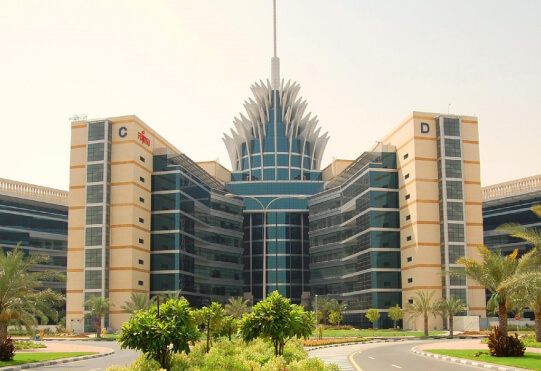Prior to the two major disturbing events like the COVID-19 pandemic and the 2022 full-scale invasion, Ukrainian logistics in terms of the share of transportation, warehousing, postal and courier activities amounted to 6.8% of GDP. About two-thirds of all trade to and from Ukraine was administered by sea routes. The rail and road connections were spread across the country, accumulating near export facilities sites in the south. Ukrainian wide rail track gauge connected the country through Belarus with the Baltic States, and with the countries of the post-soviet block. While the Kyiv region was a centerpiece of the country’s storage facilities, having 1.8-2.2 million square meters of industrial warehouses, with companies operating on 10,000-20,000 square meters.
The war significantly affected Ukrainian logistical setup, firstly due to the hostilities, secondly due to the internal shifts of population distribution. During the invasion, civilian and dual purposes airports, railway and road infrastructure, and seaports became common targets of active Russian attacks. The road infrastructure facilities suffered the greatest damage, both in absolute and value terms. Kyiv School of Economics preliminary estimates suggest that the damaged railway track measures up to 507 km in total length, 126 railway stations have been damaged, and over 700 km of railway tracks are situated in temporarily occupied territories. 19 out of 35 airfields were damaged, including 12 civilian and 7 dual-purpose airfields, and the total amount of damages to the aviation industry is estimated at about $2.1 billion. The total direct damage to seaport infrastructure, inland waterway transport facilities, and related businesses is estimated at $496 million. In total, as of April 2023, 3 ports partially resumed operations, 3 ports work as usual, and other 7 either do not work or remain under temporary occupation. Lastly, most warehouse facilities in the Kyiv region were also destroyed.
The wartime changes were felt immediately, for instance, sue to the closed airspace and blocked seaports, the load on rail and road infrastructure significantly increased. The quantity and quality of both were not enough to fully compensate for the absence of sea routes. Ukraine firstly lacked people, as many logistics industry workers joined the army, later it lacked capacity in the sorting stations, containers, and transportation. All of that further was complicated by checkpoint inspections, lack of trust in the safety of transport routes, leading to increased insurance premiums and higher costs for logistics businesses. Ukraine now has over 5 million internally displaced people, most of them residing in the west and central regions. That affected the shift of warehouse and storage facilities to these earlier underdeveloped and unprepared areas. Moreover, businesses now hesitate to store products in Ukraine long term due to the continuous possibility of attacks and, subsequently, loss of money.
Despite the importance and potential of logistics services, Ukraine’s transportation capacity is underutilized, the infrastructure and services available to shippers and logistics service providers are below the standards of EU countries, and the logistics costs faced by end users are high. With the right government’s approach, this opens up many opportunities for investments. The Ukrainian Parliament indicated its willingness to attract foreign investment to develop the industry. Therefore, currently the legislation on foreign direct investment, including through long-term public-private partnership and concession contracts financed by the private sector is being developed. With that in place, investors can look into investment opportunities into inland waterway logistics, including the modernization of the Dnipro Cascade shipping locks or setting up the river port facilities. This will utilize the Dnipro’s potential as a navigable river, allow for the export of agricultural products by river, and significantly reduce the logistics cost for producers. Other potential area of investment is the development of rail and car infrastructure near the seaports, and in general, improvement of the port infrastructure quality. That also can include the development of the network of inland container terminals and construction of transshipment complexes and cross-border terminals in western Ukraine. Moreover, the rail infrastructure also has investment potential in track electrification projects, construction of European standard gauge, high speed rail project between Kyiv and Warsaw. Lastly, the development of green projects like robotization, digitalization, and process automation can have a large investment potential taking into account the shift of warehouse and storage facilities.
The Ukrainian government currently focuses its effort on “debottlenecking” logistics with the European Union by increasing the number of checkpoints along the western borders, that includes expanding the existing checkpoints, construction of new ones, and modernization of crossing procedures. During summer 2022, Ukraine and its international partners invested into the development of the Danube river port infrastructure, because most Ukrainian trade was administered there, and prior to the invasion the area did not experience such volumes. The future plans include the creation of a system of state reserves throughout the country. Successful private business cases include the Ukrainian logistics company Nova Poshta which was able to expand its operations during the conflict, providing delivery services to remote areas of the country and even to the front lines. They opened up 1000 new branches in 2022 as well as expanded into Poland, Lithuania, and prepares to launch in Germany too.
Overall, the Russia’s ongoing war in Ukraine is causing enormous human and material costs. But with the devastation comes a once-in-a-lifetime opportunity to rebuild Ukraine’s economy by constructing cutting-edge infrastructure. Ukraine’s future reconstruction and accession to the EU create a pressing need for the improvement of logistics infrastructure. While the war is still going on, the time to act is now. Before the war ends, international investors should work with the government and prepare project plans, legal and tender documentation, conducting feasibility studies, and ensure bankability to reap the benefits of the post-war Ukraine.
****
The material was prepared by Nina Kurochka, Account Executive at CFC Big Ideas.


